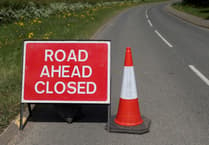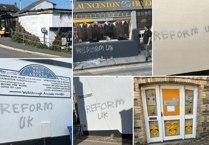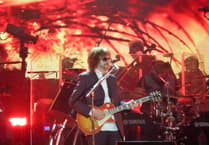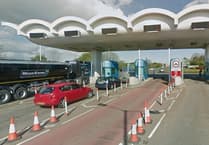I WELL remember 'D-Day' — Tuesday, June 6, 1944. I was a 13 year old kid in school in Wem, Shropshire. On that morning I caught the school bus, a 'utility Bedford' 32 seater (wooden slat seats) at the bottom of the road which led up to our house beneath the woods. I travelled the three miles into Wem and was dropped, with my 'buddies', at the school gate just a few minutes before school began.
My teacher was an ex-RAF pilot, demobbed due to a broken back suffered when he was shot down in the Battle of Britain, over Kent. We began our first lesson (this I have completely forgotten) and part way through Mr Jack Edwards (teacher) left the room, returning just a few minutes later. Something about his demeanour made all of us stop work.
Standing behind his high desk, Mr Edwards looked us over; there was not a whisper in the room. Then he started to tell us about the war. He told us that that day was the beginning of the end of the war with the Axis powers (having to explain the meaning of the term 'Axis'). He then went on to explain to us that the Allies had landed on French soil, the beginning of the road to Berlin.
Mr Edwards put up a map on the blackboard (equivalent to the computer screen at that time) and began to show us the area of the landings and what was intended to happen. As an ex-serviceman he was able to tell us in English plain language just what the radio reports meant; these reports were coming from the little radio he had brought into the classroom. He updated us throughout that day and I felt able to tell my mum just what was happening then.
Mr Edwards kept us very well informed of the progress (and set backs) of the war for the rest of the term. What a wonderful method of teaching us history and geography. For many months the chief topic of us lads was the war; we pretended to be 'air-aces' rather than cowboys as before.
My home was on a hill overlooking Shawbury air base; from outside our door I could look down on the airfield and the surrounding parking lots, some in trees, some in farmers' fields — they were everywhere. We saw the Wellingtons come — the fitting of the 'halos', the circular submarine detectors on them, the old Whitleys used as training aircraft, glider tractors, bombers, troop carriers — the 'Flying Coffins' as they were called.
For many months they had flown low over our house to drop their loads on the huge emergency landing field nearer to Wem, which we passed on the way to school every day. Around the edges of which there were huge dumps of fuel in 'jerry-cans', looking like tremendous buildings in the way they were built and camouflaged.
We could see and hear the aligning of the guns in the aircraft — tails jacked up to level flight position and facing the butts — those with tail-guns turned around the other way for the alignment and testing of those guns.
I often wandered amongst the parked aircraft around the 'drome' when moving, or counting farm animals which were allowed to graze around them. Many times walking beneath the wings to move animals sheltering from the sun in summer time. Did the sun always shine in summer back then?
Shawbury, pre-war, was the Empire Air Training School for aircraft — during the war, greatly extended to accommodate the latest aircraft for testing and for training of crews etc. My junior school was at Moreton Corbet, right on the edge of the airfield, from the age of ten. My heroes were the comic, as well as the real pilots of those days. That was the time I began to really read the newspapers and take an interest in geography and history.
Launceston.



